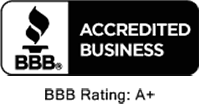Mouse Control | Exclusion
The house mouse (Mus musculus) is one of the most troublesome and economically important rodents in the United States. House mice thrive under a variety of conditions; they are found in and around homes and commercial structures as well as in open fields and agricultural lands. House mice consume and contaminate food meant for humans, pets, livestock, or other animals. In addition, they cause considerable damage to structures and property, and they can transmit pathogens that cause diseases such as salmonellosis, a form of food poisoning.
Although house mice usually prefer to eat cereal grains, they are “nibblers” and will sample many different foods. Mice have keen senses of taste, hearing, smell, and touch. They are excellent climbers and can run up any rough vertical surface. They will run horizontally along wire cables or ropes and can jump up to 12 inches from the floor onto a flat surface. Mice can squeeze through openings slightly larger than 1/4 inch across. House mice frequently find their way into homes in the fall of the year, when outdoor temperatures at night become colder.
In a single year, a female may have 5 to 10 litters of about 5 or 6 young. Young are born 19 to 21 days after mating, and they reach reproductive maturity in 6 to 10 weeks. The life span of a mouse is probably 9 to 12 months.
MANAGEMENT
Because house mice are so small, they can gain entry into homes and other buildings much more easily than rats. As a result, house mouse infestations are probably 10 to 20 times more common than rat infestations. Effective control involves sanitation, exclusion, and population reduction. Sanitation and exclusion are preventive measures. When a mouse infestation already exists, some form of population reduction such as trapping or baiting is almost always necessary.
A key to successful long-term mouse control is the limitation of shelter and of food sources wherever possible. Trapping works well when mice are not numerous, or it can be used as a follow-up measure after a baiting program. When considering a baiting program, decide if the presence of dead mice will cause an odor or sanitation problem. If so, trapping may be the best approach. Removal of mice should be followed by taking steps to exclude them so that the problem does not recur.
Exclusion
Exclusion is the most successful and permanent form of house mouse control. “Build them out” by eliminating all gaps and openings larger than ¼ inch, through which mice will enter a structure. Steel wool makes a good temporary plug. Seal cracks in building foundations and around openings for water pipes, vents, and utility cables with metal or concrete. Doors, windows, and screens should fit tightly. It may be necessary to cover the edges of doors and windows with metal to prevent gnawing. Plastic screening, rubber or vinyl, insulating foam, wood, and other gnawable materials are unsuitable for plugging holes used by mice.



